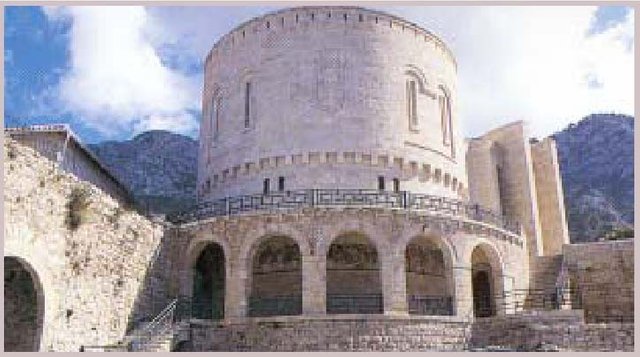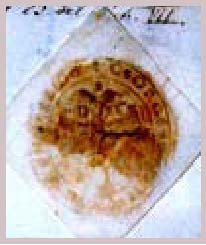HISTORY OF ALBANIA – ALBANIAN-OTTOMAN WAR AND THE ALBANIANS’ DEFENSE OF EUROPEAN CIVILIZATION
When aware of the Ottoman threat, some Albanian princes joined the Balkan coalitions against the Ottomans. In 1371, the bishop of Vlorë, Aleksandër, fought in a battle that took place in Marica, Bulgaria. In 1387, Gjergj Balsha II and Teodor Muzaka in alliance with the King of Serbia Llazar and the prince of Bosnia defeated the Ottomans in Plloshnik. Two years later Gjergj Balsha II, Teodor Muzaka and Dhimitër Jonima fought in the battle of Kosovo, known as the “Battle of Nations”.
A quarter of the military force in the anti-Ottoman coalition was Albanians. The battle of Fushë-Kosovë (Kosovo Plain) marked the end of the independence of the Albanian feudal states, which had submitted to the Ottoman yoke. Other local leaders such as Gjergj Araniti and Gjon Kastrioti continued to fight important battles, and when Araniti defeated the Ottomans between 1432 and 1435, his victories were welcomed in several European countries. He won the sympathy of the Pope and the German Emperor, Sigizmund, who pledged to to assist him, however their assistance proved to be inadequate.
Albanian resistance (1380 – 1506) culminated in the 25 years of war under the leadership of Skanderbeg, who kept the Ottoman hordes at bay. Though the Ottoman State used its entire human and military potential, two of the greatest sultans of the Empire were ignominiously defeated in battles outside the castle walls of Krujë. In this way, the Albanians led by Skanderbeg safeguarded European civilization from the Ottoman threat. Being aware that he could not resist the offensive of the mightiest empire of the time, Skanderbeg sought the assistance of European leaders, who followed news of the war with concern. He established good relations with Pope Calixtus III and Pius II, who offered invaluable moral and material assistance. Friendly relations were also established with the Kingdom of Naples and Venice and after 1463, with the cities of Raguza and Burgundy.
The victories won until then had to be carried further by making use of all human and material sources. After some preparative meetings with the leading Albanian nobles, on March 2nd 1444, the Albanian princes called a conference at Lezhë. Some landmark decisions were taken there, including the creation of an Albanian League at Lezhë as a political and military alliance with Skanderbeg at the head, the creation of an army with a commander in chief and the coffers to meet the expenses of the wars. In the 1440’s, the Albanian army defeated the Ottomans on several occasions and forced Sultan Murat II to retreat from Krujë in 1450.
After the liberation of the country and the political-military alliance Skanderbeg assured in Lezhë (March 2, 1444), he followed by creating an independent state which extended from Devoll and Seman Rivers in the south to the Dukagjini Highlands in the north, from Adriatic littoral in the west to Drini i Zi Valley in the east.
Though not yet crowned a king, (for the Pope had decided to do it when he reached Albania at the head of crusaders in 1464), the Albanian State nonetheless was a feudal monarchy with Skanderbeg as its “monarch”. Enjoying the title of “Lord of Albania”, he exercised all the powers of a monarch. He issued decrees for the total conscription of the population, for imposing the tax system, the customs and so on. He was entitled to bestow lands upon Albanian nobles who distinguished themselves by bravery and loyalty, and he also directed the State administration and exercised judicial powers.
Skanderbeg set up a number of state departments such as the Assembly of Albanian Princes, the Supreme Council and the Council of War. The State had its coffers, its army and administration, its own emblem, flag, coat of arms and official seal. The State used the flag of the principality of the Kastriots with a coat of arms representing an open-winged two-headed eagle and a six-pointed star above it.
The State under Skanderbeg had all the characteris¬tics of any state of the time. During this time, certain elements of law acted in a parallel way, a characteristic feature of the feudal society. Along with the laic law, both religious and customary law also existed, while penal and civil institutions based on the Roman and Byzantine tradition were established.

Skanderbeg Museum in Kruja Castle established in 1958
The Albanian people made an invaluable contribution in preventing the Ottomans from extending their empire towards the west, thus protecting Europe and the allowing the steady economic and cultural development of these states to continue. The Albanians won the admiration of European nations because they fought alone against the most powerful empire of the time. They became known internationally as a brave and peace-loving nation. An expression of this admiration was the influx of volunteers from various countries of Europe including Germans, Italians, English, Bulgarians, etc. In 1494 the Albanian people accepted the invitation of King Charles VIII of France to unite against the Ottomans, but on account of disagreements he was met within Italy, King Charles did not land in Albania. Despite the praise from European leaders, frequently Albanians were left alone in face of the Ottoman fury.
Of the three works, “The History of Skanderbeg” has been recognized as a treasure of Albanian national culture, and can be seen as an Albanian contribution to World history. Its numerous editions in foreign languages attest this: four in Latin, seven in German (1533), and four in Portuguese (1582). It has served as a basic source for many publications on Skanderbeg’s history in many countries of Europe. To this day, it provides the main source of information on the history of the Albanian people in Skanderbeg’s time and their fight against the Ottomans under his leadership. The writings also detail the life and activity of George Kastrioti, the spiritual strength of Albanian people, their customs and morals and national consciousness.


Thanks for your article. Skanderbeg did protect Western Europe from the advancing Ottoman Empire.